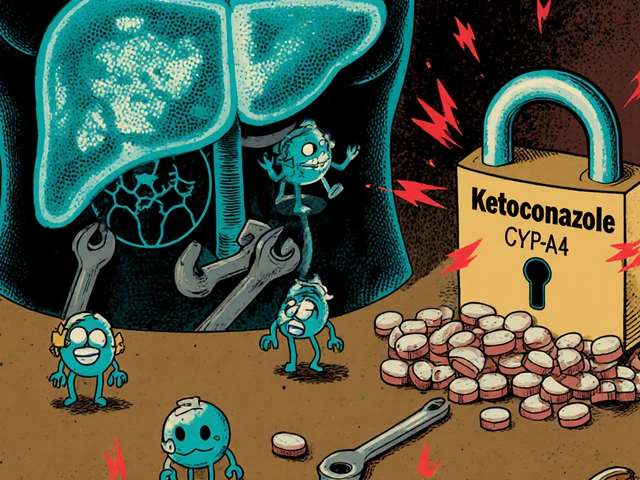When working with sulfonylurea alternatives, non‑insulin oral agents that lower glucose with a lower hypoglycaemia risk than traditional sulfonylureas. Also known as non‑sulfonylurea hypoglycemics, it gives doctors and patients a broader toolbox for type 2 diabetes management.
One of the most common alternatives is Metformin, a biguanide that improves insulin sensitivity and reduces hepatic glucose production. Metformin forms the backbone of many modern regimens because it is cheap, weight‑neutral and has decades of safety data. GLP‑1 agonists represent a newer class; these injectable or oral drugs mimic the gut hormone GLP‑1, stimulating insulin release only when glucose is high, slowing gastric emptying and often promoting weight loss. Another powerful group is SGLT2 inhibitors, agents that block kidney reabsorption of glucose, sending excess sugar out in the urine. They not only lower HbA1c but also lower blood pressure and protect the heart and kidneys. DPP‑4 inhibitors, drugs that prolong the action of endogenous GLP‑1, provide modest glucose drops with minimal side‑effects sit between the cost‑effective Metformin and the premium GLP‑1 agonists, offering an oral option that’s easy to add to existing therapy.
Choosing the right sulfonylurea alternative depends on three key attributes: efficacy, safety profile, and patient‑specific factors. For a newly diagnosed patient who wants a low‑cost start, Metformin usually takes the lead (efficacy ≈ 1%‑1.5% HbA1c reduction, hypoglycaemia ≈ 0%). If weight loss is a priority, GLP‑1 agonists can shave off several kilograms while dropping HbA1c by up to 2%. Patients with chronic kidney disease may benefit most from SGLT2 inhibitors because they also reduce albuminuria and cardiovascular events. DPP‑4 inhibitors are often chosen when tolerability is paramount; they rarely cause gastrointestinal upset and have a flat hypoglycaemia risk.
Beyond the drug class, the treatment plan requires monitoring renal function, liver enzymes and, for SGLT2 inhibitors, signs of genital infections. Many clinicians pair Metformin with one of the newer agents to achieve synergistic glucose control while keeping side‑effects low. Lifestyle coaching—diet, exercise, weight management—remains a non‑negotiable part of any regimen, regardless of the pharmacologic choice.
Below you’ll find detailed side‑by‑side comparisons, cost breakdowns, and practical tips for switching from sulfonylureas to each of these alternatives. Whether you’re a patient looking for a safer pill or a prescriber fine‑tuning a regimen, the articles ahead will give you the facts you need to make an informed decision.

A side‑by‑side look at Glucovance versus Metformin alone, sulfonylureas, DPP‑4, SGLT2 and GLP‑1 drugs, covering efficacy, safety, cost and when to switch.

Drug-drug interactions can cause serious harm when medications clash in your body. Learn how liver enzymes, transporters, and genetics affect drug safety, and what you can do to avoid dangerous combinations.

A comprehensive side‑by‑side comparison of female Viagra (sildenafil) with Addyi, Vyleesi, generic options and herbal alternatives, covering how they work, dosing, safety and when each is best.

What androstenedione does, what studies show, real risks, and 2025 legal status. Clear, science-based guide with safer alternatives and a quick checklist.

A detailed look at Chloramphenicol, its clinical uses, safety concerns, and how it stacks up against common alternatives such as Azithromycin, Ciprofloxacin, and Doxycycline.

Fluoxetine, an antidepressant, is often prescribed to treat depression, anxiety, and various mood disorders. Understanding its medical effects, potential side effects, and interactions with other medications can help users make informed decisions. This article also covers common dosages and recommendations, ensuring safety and effectiveness. Discover ways to access the best deals with practical tips and considerations.